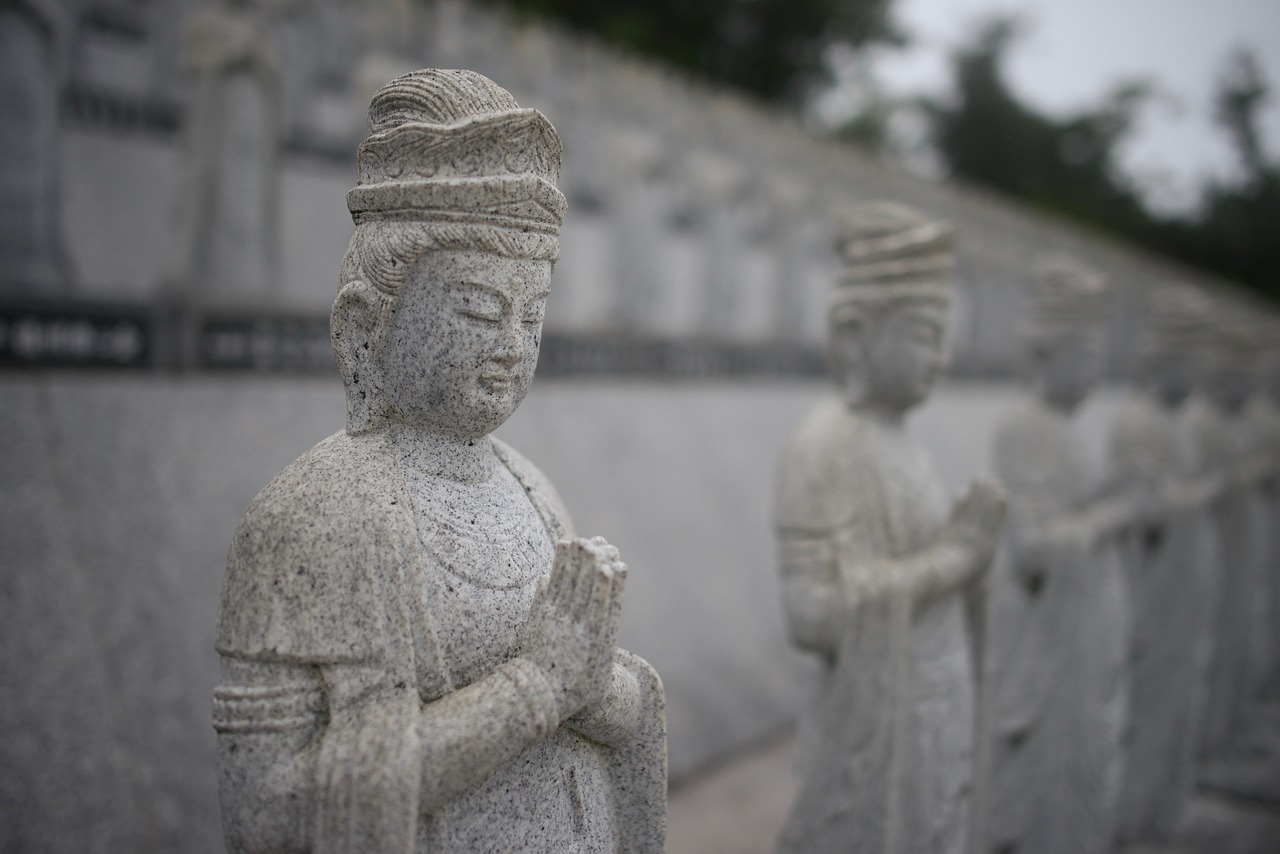This article delves into the significant impacts of British colonialism on West Bengal, highlighting the cultural, economic, and social transformations that have shaped the region’s identity and legacy.
The Arrival of the British in Bengal
The arrival of the British East India Company in the 18th century marked a crucial turning point for Bengal. This period initiated an era of profound political and economic changes that would influence the region for over two centuries.
Economic Transformation Under Colonial Rule
Colonial policies brought about drastic changes in the agricultural landscape of Bengal. The introduction of cash crops like indigo and jute significantly altered land ownership structures, impacting local economies and farmers’ livelihoods.
- The Shift to Cash Crops: The focus on cash crops transformed agricultural practices, leading to long-lasting effects on local farmers.
- Impact on Local Farmers: Many farmers found themselves trapped in cycles of exploitation and debt, resulting in widespread poverty and social unrest.
- Trade and Industry Changes: While colonialism facilitated the growth of new industries, it often came at the expense of traditional crafts and local businesses.
Infrastructure Development and Its Consequences
The British invested in infrastructure, such as railways and roads. While these developments facilitated trade, they primarily served colonial interests, often neglecting the needs of the local population.
Cultural Impacts of British Rule
Colonialism led to significant cultural exchanges, introducing Western education and the English language to Bengali society.
- Education Reforms and Western Influence: The introduction of Western-style education created a new class of educated Bengalis, significantly impacting social structures.
- Literature and Arts During Colonialism: Colonial rule influenced Bengali literature and arts, leading to a rich cultural renaissance as writers and artists responded to the changing socio-political landscape.
Social Changes and Resistance Movements
The social fabric of West Bengal underwent considerable changes, with the rise of nationalist movements that challenged colonial authority.
- The Role of Women in Resistance: Women played crucial roles in resistance movements, challenging traditional norms and actively participating in the fight for independence.
- Legacy of Colonialism in Modern Bengal: The effects of British colonialism are still evident in various aspects of West Bengal’s society, culture, and politics, shaping its contemporary identity and challenges.
In conclusion, the legacy of British colonialism in West Bengal is complex and multifaceted, influencing the region’s economic structures, cultural identity, and social dynamics. Understanding these impacts is essential for grasping the challenges and opportunities faced by modern Bengal.

The Arrival of the British in Bengal
The arrival of the British East India Company in Bengal in the early 18th century marked a transformative era in the region’s history. This event was not merely an isolated incident; it represented the beginning of a profound and extensive period of political, economic, and social change that would resonate through Bengal for over two centuries. The implications of this arrival were far-reaching, reshaping the lives of countless individuals and the very fabric of society.
Initially, the British presence was characterized by trade and commerce. The East India Company sought to establish a foothold in Bengal due to its rich resources, particularly in textiles and spices. However, as the Company gained power, it transitioned from a trading entity to a governing force, leading to the exploitation of local resources and communities. The imposition of British laws and regulations disrupted traditional practices, resulting in significant changes in land ownership and agricultural practices.
Moreover, the economic landscape of Bengal underwent a drastic transformation. The British introduced cash crops to maximize profits, prioritizing commodities like indigo and jute over subsistence farming. This shift not only altered the agricultural practices but also led to widespread poverty among local farmers who were often forced into debt due to exploitative practices. Consequently, the socio-economic stability of the region was severely undermined.
In addition to economic changes, the arrival of the British initiated a complex cultural exchange. The introduction of Western education and the English language created a new class of educated Bengalis, who began to challenge colonial authority and advocate for reforms. This period also witnessed a flourishing of Bengali literature and arts as local artists and writers responded to the changing socio-political landscape.
In conclusion, the arrival of the British in Bengal was a pivotal moment that initiated a cascade of changes affecting every aspect of life in the region. From economic exploitation to cultural transformations, the legacy of British colonialism continues to shape Bengal’s identity today.

Economic Transformation Under Colonial Rule
The British colonial era brought about significant changes to the agricultural landscape of West Bengal, fundamentally altering the region’s economic structure. These transformations were primarily driven by the introduction of cash crops, which shifted the focus from subsistence farming to the production of commodities aimed at export markets.
Under colonial policies, crops such as indigo, jute, and tea were prioritized, leading to a dramatic shift in land use. This transition not only affected the types of crops grown but also had profound implications for land ownership and local economies. Traditional farming practices were disrupted as farmers were compelled to cultivate these cash crops, often under oppressive conditions dictated by colonial mandates.
As a result, many local farmers found themselves trapped in cycles of debt and exploitation. The system of zamindari, which involved landlords collecting taxes from tenant farmers, exacerbated these issues, leading to widespread poverty. The focus on cash crops often meant that food production was neglected, resulting in food insecurity for many communities.
Moreover, these economic changes had a ripple effect on local economies, undermining traditional industries and crafts that had sustained the region for centuries. The introduction of colonial industries, while creating new job opportunities, often came at the expense of local artisans and craftsmen, leading to a decline in traditional knowledge and practices.
In summary, the British colonial policies significantly transformed the agricultural landscape of West Bengal, introducing cash crops that reshaped land ownership and local economies. This legacy of economic transformation continues to influence the region’s agricultural practices and socio-economic conditions even today.
The Shift to Cash Crops
The introduction of cash crops such as indigo and jute during the British colonial period significantly altered the agricultural landscape of West Bengal. This shift not only transformed farming practices but also had profound implications for local farmers and the economy.
Prior to colonial rule, agriculture in West Bengal was primarily focused on subsistence farming, where farmers grew a variety of crops to feed their families and local communities. However, with the British emphasis on cash crops, farmers were compelled to change their cultivation methods. The monoculture approach encouraged by the British meant that farmers specialized in a single crop, which had several consequences:
- Increased Vulnerability: Farmers became increasingly dependent on the market for their income, making them vulnerable to price fluctuations and market demands.
- Debt and Exploitation: Many farmers took loans to invest in cash crop production, often leading to a cycle of debt and exploitation by moneylenders and colonial authorities.
- Environmental Impact: The focus on cash crops often led to the overuse of land and resources, resulting in soil degradation and reduced agricultural diversity.
The economic implications of this shift were significant. The profits from cash crops primarily benefited British traders and the colonial economy, while local farmers struggled to make ends meet. This disparity contributed to widespread poverty and social unrest, as many farmers found themselves unable to sustain their families.
Moreover, the shift to cash crops disrupted traditional agricultural practices and community structures. As farmers became more focused on cash crops, the rich tapestry of local farming cultures began to unravel. This change not only affected the farmers but also had a ripple effect on the entire economy of West Bengal, reshaping its future and leaving a lasting legacy that is still felt today.
In conclusion, the emphasis on cash crops like indigo and jute during British colonialism transformed agricultural practices in West Bengal, leading to profound economic and social consequences that shaped the lives of local farmers and the broader economy.
Impact on Local Farmers
The arrival of British colonial rule in Bengal significantly transformed the agricultural landscape, with profound implications for local farmers. The shift towards cash crops, driven by the demands of the British economy, led to a series of challenges that many farmers were ill-prepared to face.
Initially, the focus on cash crops such as indigo and jute promised economic opportunities. However, this shift often resulted in exploitation and increased debt for farmers. The British policies imposed a system where farmers were coerced into growing these cash crops instead of food crops, leading to food shortages and increased vulnerability.
Many farmers found themselves trapped in a cycle of debt as they had to borrow money to purchase seeds and pay for other agricultural inputs. The high-interest rates set by moneylenders exacerbated their financial struggles, pushing them further into poverty. As a result, the once-thriving agricultural communities began to experience widespread poverty and social unrest.
| Challenges Faced by Farmers | Consequences |
|---|---|
| Shift to cash crops | Food shortages |
| High-interest loans | Increased debt |
| Loss of traditional farming practices | Economic instability |
The impact of these economic structures was not only financial but also social. The exploitation of farmers led to a breakdown of traditional community bonds and a rise in social tensions. Many farmers began to organize and resist these oppressive practices, leading to the emergence of various social movements aimed at reclaiming their rights and livelihoods.
In conclusion, the British colonial policies had a devastating impact on local farmers in Bengal, leading to a legacy of poverty and social unrest that would resonate through the generations. Understanding this impact is crucial for comprehending the broader socio-economic landscape of modern West Bengal.
Trade and Industry Changes
The advent of British colonialism in Bengal not only transformed the agricultural landscape but also significantly impacted trade and industry. This period marked a shift in the economic framework, leading to the establishment of new industries while simultaneously undermining traditional crafts and local businesses.
Initially, the British introduced modern manufacturing techniques and industries, focusing on the production of raw materials for export. Industries such as jute and tea emerged as crucial components of the colonial economy, driven by British demand in international markets. However, this new industrial focus often came at the expense of local artisans and traditional crafts that had been the backbone of Bengal’s economy for centuries.
Decline of Traditional Crafts
As British policies favored mechanized production, many local artisans faced dire consequences. The influx of British manufactured goods flooded the market, making it increasingly difficult for local craftspeople to compete. Traditional crafts such as weaving, pottery, and metalwork saw a significant decline, leading to a loss of cultural heritage and economic stability for many families.
Economic Displacement
This economic displacement was not merely an isolated incident; it had far-reaching effects on the social fabric of Bengal. As local businesses struggled to survive, many artisans were forced to abandon their trades, leading to a rise in unemployment and social unrest. The colonial economic policies created a dependency on British goods and industries, reshaping the economic landscape of Bengal in a way that favored colonial interests over local welfare.
Conclusion
In conclusion, while British colonialism facilitated the establishment of new industries in Bengal, it did so at a significant cost to traditional crafts and local businesses. The economic landscape was irrevocably altered, leading to a complex legacy that continues to influence Bengal’s identity today. Understanding these changes provides insight into the profound impact of colonialism on the region’s economic and cultural history.
Infrastructure Development and Its Consequences
The impact of British colonialism on West Bengal is profoundly intertwined with the development of infrastructure. The British invested heavily in constructing railways, roads, and ports, primarily to facilitate trade and enhance the efficiency of resource extraction. While these developments undoubtedly modernized the region’s transport network, they also served the interests of colonial powers rather than the local population.
Initially, the introduction of railways in the mid-19th century was heralded as a means to connect remote areas with urban centers, thereby promoting economic growth. However, a closer examination reveals that these infrastructures were predominantly designed to transport raw materials to ports for export, benefiting British industries and markets. Local needs and priorities were often overlooked, leading to a disparity in development that favored colonial interests.
Furthermore, the construction of roads and railways frequently disrupted traditional trade routes and local economies. Small-scale traders and artisans found it increasingly difficult to compete with imported goods, resulting in the decline of local industries. This shift not only altered the economic landscape but also had profound social implications, as communities faced job losses and a reduction in their livelihoods.
In addition to economic consequences, the infrastructure projects often led to significant environmental changes. The clearing of land for railways and roads disrupted local ecosystems, affecting agriculture and biodiversity. The focus on transportation networks also meant that investment in other essential services, such as healthcare and education, was largely neglected.
In conclusion, while the infrastructure developed during British colonial rule in West Bengal facilitated trade and modernization, it primarily served the interests of the colonial powers. The long-term consequences of these developments have left an indelible mark on the region, shaping its economic and social fabric in ways that continue to be felt today.

Cultural Impacts of British Rule
The era of British colonialism in Bengal was marked by profound cultural transformations that reshaped the region’s identity. One of the most significant changes was the introduction of Western education and the English language, which left a lasting imprint on Bengali society.
With the establishment of British educational institutions, a new class of educated Bengalis emerged. This intellectual awakening not only fostered a sense of national identity but also played a crucial role in the fight for independence. The curriculum, heavily influenced by Western ideals, emphasized rational thought and scientific inquiry, which contrasted sharply with traditional educational practices.
Moreover, the English language became a powerful tool for communication and expression. It opened doors to global literature and ideas, enabling Bengali writers and thinkers to engage with a broader intellectual community. This interaction sparked a cultural renaissance in Bengal, leading to the creation of a rich body of literature that addressed social issues and political aspirations.
| Key Cultural Changes | Description |
|---|---|
| Western Education | Introduction of English-medium schools that promoted modern subjects. |
| English Language | Facilitated access to global literature and ideas, influencing local writers. |
| Cultural Renaissance | Emergence of a new literary and artistic movement responding to colonialism. |
In addition to education and language, colonial rule also influenced the arts. Bengali artists and writers responded to the socio-political changes, producing works that reflected both their struggles and aspirations. This period saw the rise of notable figures like Rabindranath Tagore, whose contributions transcended borders and showcased the richness of Bengali culture.
In conclusion, the cultural impacts of British rule in Bengal were profound and multifaceted. The introduction of Western education and the English language not only transformed the educational landscape but also laid the foundation for a vibrant cultural identity that continues to evolve today.
Education Reforms and Western Influence
The advent of British colonial rule in Bengal brought about significant changes in the educational landscape. The introduction of Western-style education was a transformative step that not only reshaped the academic framework but also fostered a new class of educated Bengalis. This educated elite played a crucial role in altering the social dynamics of the region, ultimately leading to movements for reform and independence.
Prior to British intervention, traditional education in Bengal was primarily religious and community-based, focusing on scriptural studies and vocational training. However, the British introduced a formal system of education that emphasized subjects like science, mathematics, and the English language. This shift was not merely academic; it had profound social implications. The newly educated class began to challenge existing norms and advocate for social reforms.
| Key Features of Western Education | Impact on Society |
|---|---|
| Introduction of English Language | Facilitated communication with the British and access to global knowledge. |
| Focus on Science and Technology | Encouraged modernization and critical thinking among the youth. |
| Establishment of Universities | Created a platform for higher education and intellectual discourse. |
This educational reform led to a sense of awareness among the Bengalis regarding their rights and social justice. The educated class began to form associations and movements aimed at addressing social issues such as caste discrimination, women’s rights, and the need for political representation. Figures like Raja Ram Mohan Roy and Swami Vivekananda emerged, advocating for societal reforms and awakening a national consciousness.
In conclusion, the introduction of Western-style education not only created a new class of educated Bengalis but also significantly impacted the social structures of Bengal. This educated elite became instrumental in the fight for independence and reform, laying the groundwork for future generations to challenge colonial rule and strive for a more equitable society.
Literature and Arts During Colonialism
The impact of British colonial rule on Bengali literature and arts was profound and multifaceted. As colonialism reshaped the socio-political landscape of Bengal, writers and artists began to respond to these changes in innovative ways, ushering in a cultural renaissance that would leave a lasting legacy.
During the colonial era, Bengali literature saw the emergence of a new literary voice. Writers like Rabindranath Tagore, who became the first non-European Nobel laureate in Literature, began to explore themes of identity, freedom, and social justice. His works often reflected the struggles of the Bengali people under colonial oppression, inspiring a sense of nationalism and cultural pride.
In addition to Tagore, other prominent figures such as Bankim Chandra Chatterjee and Sarat Chandra Chattopadhyay used their narratives to critique colonial rule and highlight the socio-economic issues faced by the common people. Their writings not only entertained but also educated the masses about their rights and the importance of self-determination.
The arts also flourished during this period, with painters and musicians drawing inspiration from both traditional Bengali culture and Western influences. The Bengal School of Art, led by artists like Abanindranath Tagore, sought to create a distinct Indian style that resisted colonial aesthetics. This movement emphasized indigenous themes and techniques, fostering a sense of cultural identity amidst foreign domination.
Moreover, the introduction of Western education played a crucial role in shaping the artistic and literary scene. The establishment of educational institutions and the promotion of the English language allowed Bengali intellectuals to engage with global ideas, leading to a rich exchange of thoughts and styles.
In conclusion, the colonial period was a defining moment for Bengali literature and arts. The responses from writers and artists not only enriched the cultural tapestry of Bengal but also laid the groundwork for future movements that would continue to challenge the status quo and promote a sense of national identity.

Social Changes and Resistance Movements
The social landscape of West Bengal has been profoundly shaped by a series of events and movements that emerged during the colonial period. As British rule entrenched itself, various social changes took root, fostering a spirit of resistance that would eventually challenge colonial authority. This article delves into the intricate tapestry of social transformations and the rise of nationalist movements that characterized West Bengal during this pivotal time.
One of the most significant aspects of this period was the emergence of nationalist movements that sought to unite the people of Bengal against colonial oppression. These movements were not merely political; they were rooted in a growing awareness of identity and rights among the populace. The awakening of a collective consciousness among Bengalis led to the formation of various organizations, such as the Indian National Congress and the Bangiya Muslim Samity, which aimed to address the grievances of the people.
Moreover, social reformers played a crucial role in this transformation. Figures like Rammohun Roy and Iswarchandra Vidyasagar advocated for reforms in education, women’s rights, and the abolition of social evils like Sati. Their efforts not only challenged traditional norms but also inspired a new generation to fight for social justice and equality.
The rise of women’s participation in these movements marked a significant shift in the social fabric of Bengal. Women began to step out of their conventional roles, actively participating in protests and rallies, thereby reshaping societal perceptions of gender roles. This involvement was instrumental in highlighting the need for women’s rights and empowerment within the broader nationalist agenda.
In conclusion, the social changes in West Bengal during the colonial period were marked by a profound awakening among its people, leading to the rise of various resistance movements. These movements not only challenged colonial rule but also laid the groundwork for future struggles for independence and social reform, leaving a lasting legacy that continues to resonate in modern Bengal.
The Role of Women in Resistance
Throughout history, women have been at the forefront of resistance movements, particularly in the context of colonial rule. In West Bengal, during the struggle for independence from British colonialism, women not only challenged traditional norms but also emerged as pivotal figures in the fight for freedom. Their contributions were multifaceted, encompassing activism, leadership, and grassroots mobilization.
- Challenging Gender Norms: Women defied societal expectations by stepping into roles that were traditionally reserved for men. They organized protests, participated in boycotts, and led campaigns that demanded justice and equality.
- Leadership Roles: Figures such as Begum Roquiah Sakhawat Hossain and Matangini Hazra became symbols of resistance. They inspired countless others to join the movement, demonstrating that women could be powerful leaders and activists.
- Grassroots Mobilization: Women played a crucial role in mobilizing communities, raising awareness about the injustices of colonial rule, and fostering solidarity among different social groups. Their efforts helped to unite people across various backgrounds in the fight for independence.
The involvement of women in resistance movements was not limited to urban areas. Rural women also contributed significantly, often risking their lives to protect their communities and fight against oppressive practices. They were instrumental in disseminating information, organizing local protests, and providing support to male counterparts.
Furthermore, women’s participation in these movements led to a gradual shift in societal perceptions regarding gender roles. Their active engagement in the struggle for independence laid the groundwork for future generations, challenging patriarchal norms and advocating for women’s rights.
In conclusion, the role of women in resistance movements during the colonial era in West Bengal was both transformative and essential. Their courage and determination not only contributed to the fight for independence but also reshaped societal views on women’s capabilities and rights. As we reflect on this period, it is crucial to recognize and honor the sacrifices and achievements of these remarkable women.
Legacy of Colonialism in Modern Bengal
The legacy of British colonialism in modern Bengal is a complex tapestry of historical influences that continue to shape the region’s identity. The colonial period, which lasted for over two centuries, left indelible marks on various facets of Bengali society, culture, and politics. Understanding these effects is crucial for grasping the contemporary challenges that West Bengal faces today.
Societal Changes and Cultural Identity
One of the most profound impacts of British rule was the transformation of Bengali society. The introduction of Western education and the English language created a new educated class that became instrumental in the socio-political movements of the 19th and 20th centuries. This class played a pivotal role in the Indian independence movement, advocating for social reforms and greater rights for the local populace.
Political Landscape and Governance
The political structures established during colonial rule have had lasting effects on governance in West Bengal. The legacy of centralized administration and bureaucratic systems continues to influence the way politics is conducted today. Issues such as corruption and political patronage can be traced back to colonial practices that prioritized loyalty over merit.
Economic Challenges
The economic policies imposed by the British, which prioritized cash crops over subsistence farming, have led to persistent economic challenges in the region. The focus on industries such as jute and tea created a dependency that has not fully dissipated, affecting local economies and livelihoods. Today, West Bengal continues to grapple with issues of poverty and unemployment, remnants of the colonial economic framework.
Modern Cultural Renaissance
Despite these challenges, the cultural impact of colonialism has also paved the way for a rich cultural renaissance in Bengal. The fusion of traditional Bengali culture with Western influences has given rise to a unique artistic expression that continues to thrive. Literature, music, and art in modern Bengal reflect this blend, showcasing resilience and creativity.
In conclusion, the effects of British colonialism are deeply embedded in the fabric of modern West Bengal. From societal structures to economic frameworks and cultural expressions, the colonial legacy is a critical aspect of understanding the region’s contemporary identity and the challenges it faces.


























































